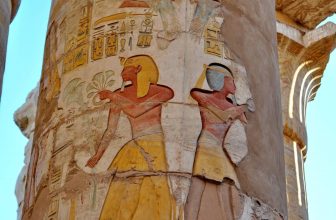Bayt al-kritliyya is one of the most beautiful and intriguing examples of 17th-century Arab residential architecture still standing in Cairo, and it provides a perfect environment for ancient Egyptian, Coptic, and Islamic furniture, rugs, and artifacts. It’s off of ‘Abd al-Magid al-Labban (Al-Salbiyya) Street in Sayyida Zeinab, Cairo, on the southeast corner of the Mosque of Ibn Tulun.
The History of the House:
The museum is made up of two homes that are supported by the Ibn Tulun Mosque’s exterior wall. Hajj Mohammad Ibn al-Hajj Salem Ibn Galman al-Gazzar constructed the bigger home to the east (the farthest side in respect to the mosque) in 1632 (1041 AH). It was eventually acquired by a rich Muslim woman from Crete, and the house became known as Beit al-Kritliyya, or “House of the Cretan Woman.” Abdel-Qader al-Haddad erected the second home to the west (the innermost side in respect to the mosque) in 1540 (947 AH).

It was then dubbed “Beit Amna bint Salim” after its previous owner. The two homes were connected by a bridge at an unknown place on the third-floor level, and they are today known as Beit al-Kritliyya.
It was usual practice to build private residences against the mosque’s exterior wall, with access to both the homes and the mosque via small streets. The mosque of Ibn Tulun could not be seen from the outside owing to the homes in the early twentieth century, according to reports. As part of a campaign to make significant Islamic sites more accessible, the Egyptian authorities began clearing houses away from the mosque in 1928, many of which were in bad condition. The Committee for the Conservation of Arab Monuments, on the other hand, opposed the demolition of Beit al-Kritliyya since it was in such good condition.

The house was preserved, and after the surrounding homes were demolished, repairs were done to the side walls to reinforce them.














